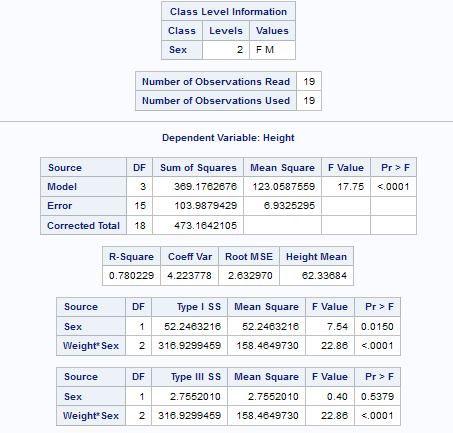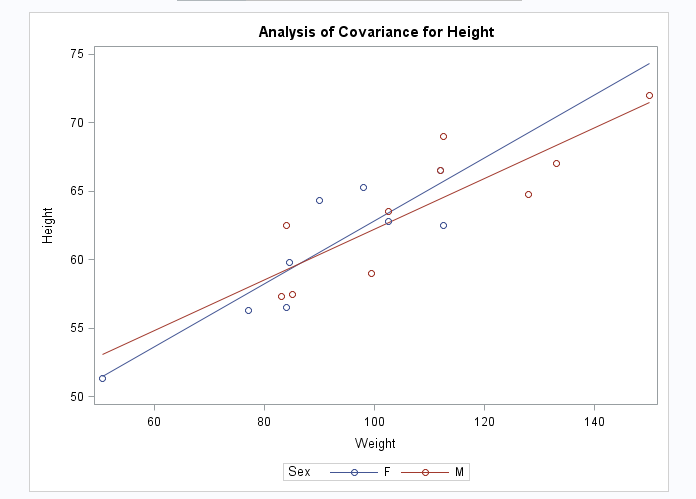Analysis of Covariance Task
About the Analysis of Covariance Task
The Analysis of Covariance task fits a linear model that combines the continuous and categorical predictors of a continuous dependent variable. This task also produces graphical output to interpret the results.
Note: You must have SAS/STAT to
use this task.
Assigning Data to Roles
To run the Analysis
of Covariance task, you must assign columns to the Dependent
variable, Categorical variable,
and Continuous covariate roles.
|
Role
|
Description
|
|---|---|
|
Dependent
variable
|
specifies a continuous numeric variable.
|
|
Categorical
variable
|
specifies a character or numeric variable that specifies the levels of the groups.
|
|
Continuous
covariate
|
specifies a continuous numeric variable that is related to the dependent variable.
You can specify whether to center the covariate variable.
|
Setting Options
|
Option
|
Description
|
|---|---|
|
Model
|
|
|
Intercepts
|
specifies whether to use the equal or unequal intercepts for each level of the categorical variable.
|
|
Slopes
|
specifies whether to use the equal or unequal slopes for each level of the categorical
variable.
|
|
Show parameter
estimates
|
produces a solution to the normal equations (parameter estimates). By default, the task displays a solution if your model does not include
any classification variables. Select this option only if you want to see the solution for models with classification effects.
|
|
Multiple Comparisons
|
|
|
Perform
multiple comparisons
|
performs the least squares means for the categorical variable.
|
|
Covariate
value
|
specifies the value to use in multiple comparisons. The covariate value can be either
the mean value or a specified value.
|
|
Method
|
requests a multiple
comparison adjustment for the p-values and confidence limits for the differences of LS-means.
Here are the available
methods:
|
|
Significance
level
|
specifies the significance level for the comparisons. The default is 0.05.
|
|
Plots
|
|
|
You can choose to display only the default plots in your output, select the plots to display in the output, or display no plots in
the output. The list of available plots depends on the method that you selected for
multiple comparisons.
|
|
Copyright © SAS Institute Inc. All rights reserved.


